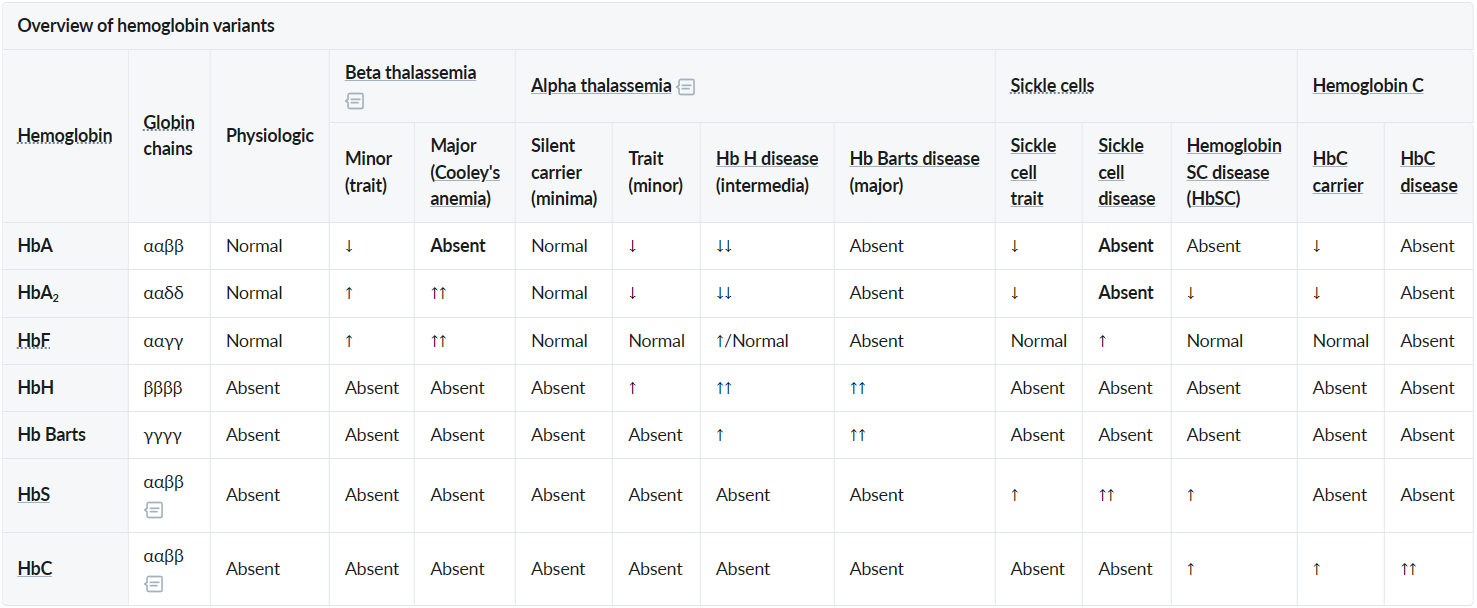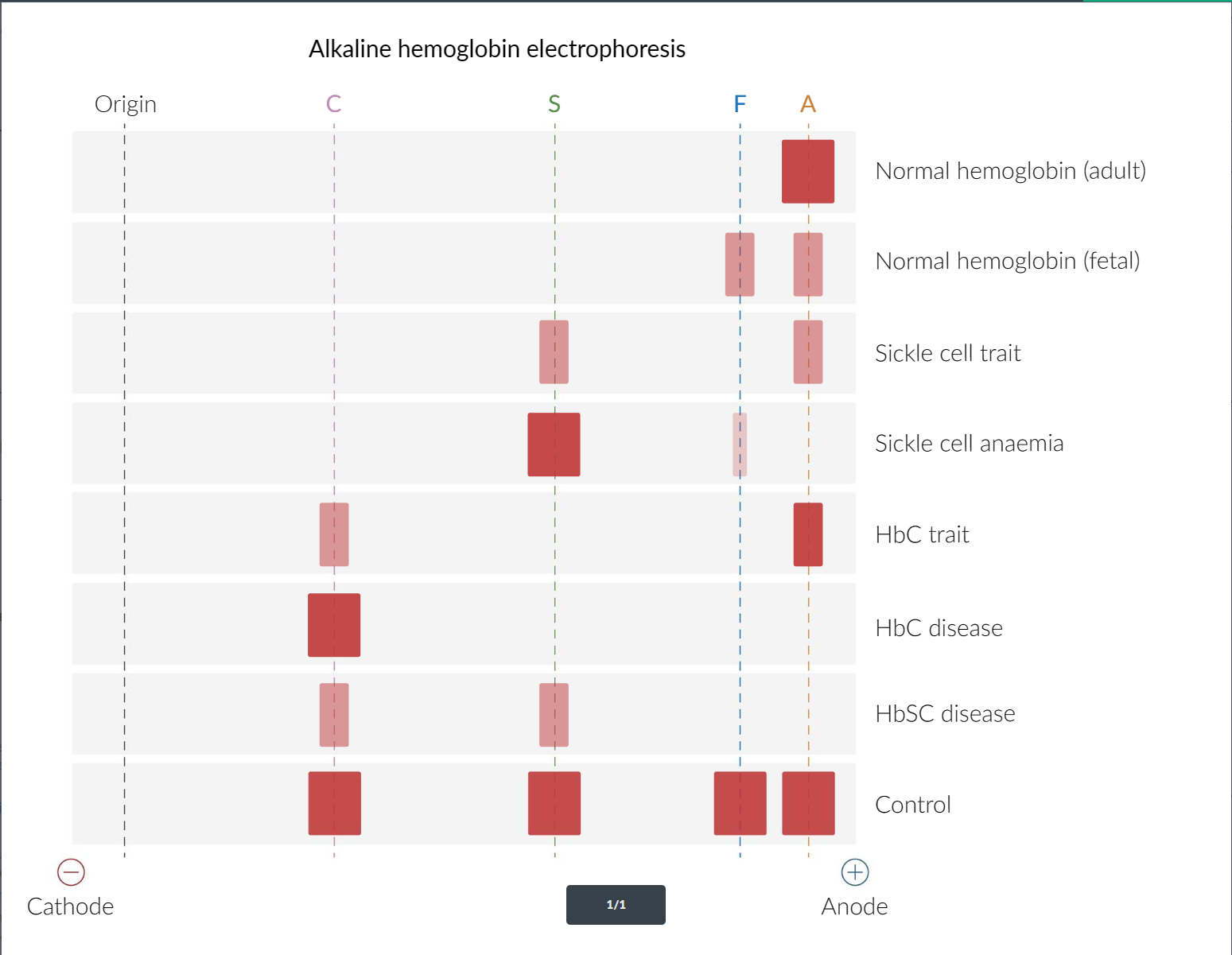Globins
| Feature | α | β | δ | γ |
|---|---|---|---|---|
| Main period | All | Late fetal to Adult | Infancy to Adult | Embryonic, Fetal, Neonatal |
| Partner in Hb | β, γ, δ | α | α | α |
| Major Hb form | All | HbA | HbA2 | HbF |
| O2 affinity | Variable | Normal | Normal | High |
| Disease link | α-thal. | β-thal., SCD | None serious | Therapeutic |
| Key Distinctive Feature | Only globin present in all major hemoglobins; essential for life | Principal adult hemoglobin chain; most clinically relevant | Almost identical to β but less abundant; forms minor adult HbA2 | Highest O2 affinity; critical for fetal-maternal O2 transfer |
Hemoglobins
| HbA | HbA2 | HbF | HbS | HbC | |
|---|---|---|---|---|---|
| Normal | ++++ | + | + | None | None |
| Sickle cell trait | +++ | + | + | +++ | None |
| Sickle cell anemia (SCA) | None | + | + | ++++ | None |
| SCA on hydroxyurea | None | + | ++ | +++ | None |
| Hemoglobin SC disease | None | + | + | +++ | +++ |

- HbF: has significantly higher oxygen affinity than adult hemoglobin A. This allows fetal hemoglobin to extract more oxygen from the mother’s adult hemoglobin in the placenta, providing the developing fetus with an adequate supply of oxygen.
- HbS: Point mutation in the β-globin gene resulting in the replacement of glutamic acid by valine
- HbC: Point mutation in the β-globin gene resulting in the replacement of glutamic acid by lysine
Hb-electrophoresis
Mnemonic
The mnemonic “A Fat Santa Claus” helps recall the migration order from Anode (+) to Cathode (-): A > F > S > C.

- Normal hemoglobin consists primarily of hemoglobin A (HbA), which migrates rapidly toward the positive electrode (anode) because of its negative charge.
- Hemoglobin S (HbS) is an abnormal type of hemoglobin in which a nonpolar amino acid (valine) replaces a negatively charged amino acid (glutamate) in the beta globin chain. This amino acid replacement decreases the negative charge on the HbS molecule, which causes HbS to move more slowly toward the anode.
- Glutamate (-) → Valine (=)
- Similarly, hemoglobin C (HbC) has a glutamate residue replaced by lysine in the beta globin chain. Because lysine is a positively charged amino acid, HbC has even less total negative charge than HbS and moves even more slowly toward the anode. Both HbC and HbS result from missense mutations, a type of mutation in which a single base substitution results in a codon that codes for a different amino acid.
- Glutamate (-) → Lysine (+)